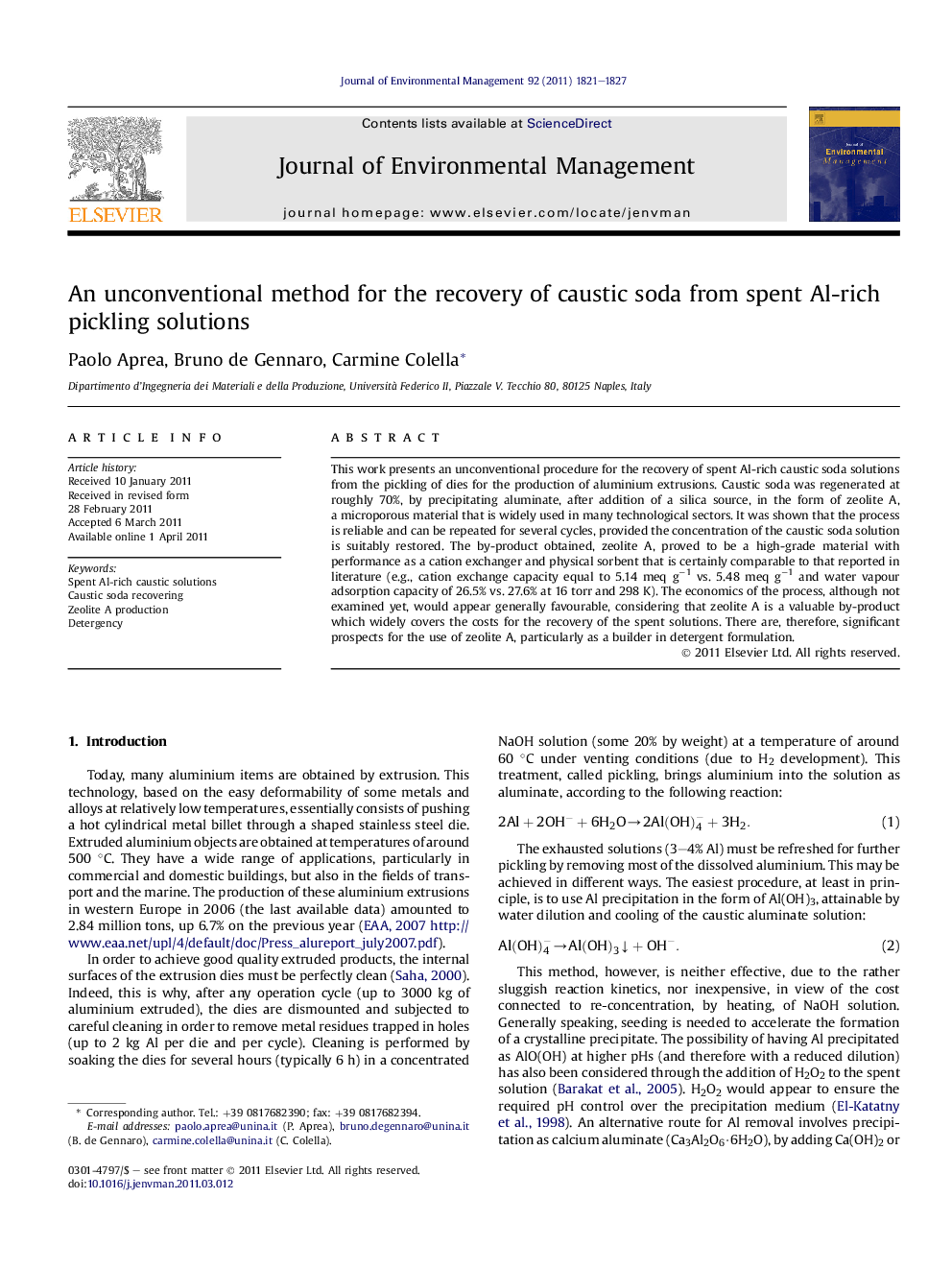| Article ID | Journal | Published Year | Pages | File Type |
|---|---|---|---|---|
| 1057165 | Journal of Environmental Management | 2011 | 7 Pages |
This work presents an unconventional procedure for the recovery of spent Al-rich caustic soda solutions from the pickling of dies for the production of aluminium extrusions. Caustic soda was regenerated at roughly 70%, by precipitating aluminate, after addition of a silica source, in the form of zeolite A, a microporous material that is widely used in many technological sectors. It was shown that the process is reliable and can be repeated for several cycles, provided the concentration of the caustic soda solution is suitably restored. The by-product obtained, zeolite A, proved to be a high-grade material with performance as a cation exchanger and physical sorbent that is certainly comparable to that reported in literature (e.g., cation exchange capacity equal to 5.14 meq g−1 vs. 5.48 meq g−1 and water vapour adsorption capacity of 26.5% vs. 27.6% at 16 torr and 298 K). The economics of the process, although not examined yet, would appear generally favourable, considering that zeolite A is a valuable by-product which widely covers the costs for the recovery of the spent solutions. There are, therefore, significant prospects for the use of zeolite A, particularly as a builder in detergent formulation.
